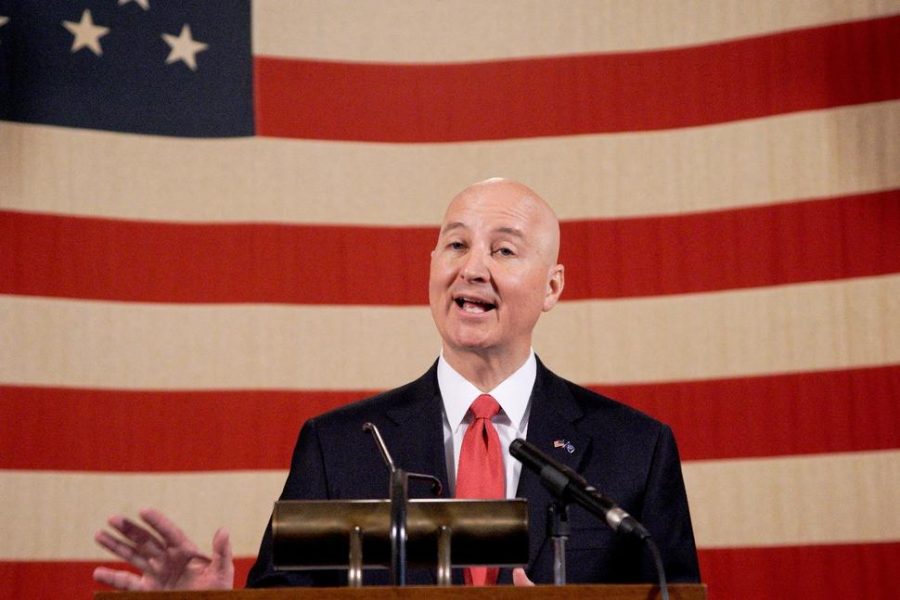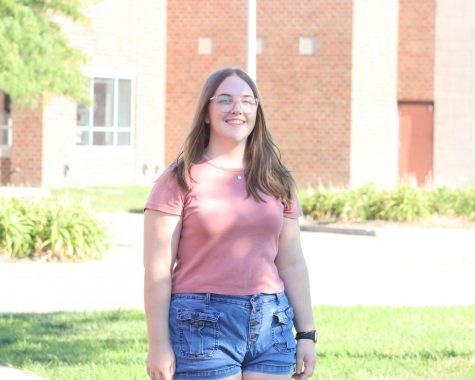Coronavirus widening gap
Remote learning reveals inequalities among students
Nebraska governor, Pete Ricketts, talks to education leaders in Lincoln on March 13th. Initially, schools in Omaha were ordered to be closed for 6-8 weeks. On April 1st, Governor Ricketts issued a Directed Health Measure to keep students out of school buildings through May 31.
April 5, 2020
In early March, coverage of a new virus started to take over mainstream media in the US after the World Health Organization declared it a pandemic. As the virus spread to more individuals and more countries, people around the world started asking a lot of what if’s. The end of the school year was approaching, and with it standardized tests, graduation plans and last-minute content cramming. Schools started shutting down, leaving students, teachers and staff no longer wondering what if, but what now?
COVID-19 is being compared extensively to the 1918 flu pandemic, and it’s quickly revealing how much has changed in the last century beyond just medical capabilities. However, as education and technology have advanced and intertwined, many students have been left behind. In a public education system that’s already hugely unequal, the pandemic has only exacerbated existing issues. Millard school buildings are closed indefinitely, but with the district’s remote learning plan, students are facing an unprecedented situation.
Remote learning has presented an abundance of hurdles for all different kinds of families in Nebraska. One issue that’s been revealed is the gap in access to technology and Wi-Fi. Luckily, steps are being taken locally and nationally to close this gap. Large Internet providers including Verizon, AT&T and CenturyLink have signed onto the Keep Americans Connected pledge to open WiFi hotspots and keep people who can’t pay their bills connected for 60 days. Schools should work with families to make sure they’re aware of these resources and can access them.
Especially amid a major pandemic, mental health issues are becoming obstacles for students adjusting to learning from home. According to data from the Nebraska Department of Health and Human Services, 27% of high schoolers in Nebraska reported experiencing depressive symptoms in 2017 and 16% reported seriously considering suicide in the last year. Anxiety is one of the most prevalent mental health disorders, affecting around 31.9% of adolescents in the US. COVID-19 is only making things worse. Already, crisis centers are seeing major upticks in calls. It’s uncertain what the long-term impacts of this will be on teen’s mental health, but it’s clear that schools need to find ways to continue providing support systems to students as they learn from home without the face-to-face interaction from friends, teachers and counselors.
Students with learning challenges or disabilities are a cohort uniquely disadvantaged by the entire situation. As teachers and staff scramble to adapt their content and figure out online platforms, centering the needs of students who may require additional help or resources is being pushed to the backburner. Without the help of things such as one-on-one tutoring or text to speech tools, the gap between students of different abilities will continue to widen dramatically. Schools have both a moral and a legal obligation to support students with individualized learning plans and those in need of other accommodations during a school closure.
Low-income families are particularly hard-hit by the extensive economic impacts of the pandemic. Omaha’s poverty rate of 15.1% is higher than the national average of 13.1%. In Nebraska, 39% of children live in low-income households. Oftentimes, the parents in these households don’t have a college degree or a high school diploma, which may pose challenges as parents have to play more of a role as a teacher. In many cases, parents can’t stay home to help their kids. Seven out of ten low-wage workers don’t have paid sick days, and being an essential worker in a low-wage job, like a grocery store employee or a janitor, means not having the option to work from home. For high schoolers, this sometimes means they are left to watch younger siblings and help them with their work while also juggling their own remote learning assignments. Around 35% of teens themselves have jobs, and some are still working during this crisis. More students and their families will inevitably be impacted as unemployment claims continue to climb dramatically in Nebraska. It’s critical for schools in this time to recognize that the economic situations of families are being heavily impacted and leaving students with concerns more important than finishing online assignments.
New York, currently the state hardest hit by the pandemic, is setting an example by implementing one-to-one support, providing food to students and donating technology to people who need it. In Nebraska, school districts are working on their own solutions to the issues that have been presented. Millard is providing free, to-go breakfast and lunch from 11 schools. Omaha Public Schools is providing engagement activities for students but not grading those activities. Bellevue Public Schools is also providing engagement activities online and made packets available for those without internet access. In Council Bluffs, students from second grade and up were sent home with Chromebooks and chargers.
Despite these efforts to continue teaching content, kids will fall behind and the gap will be huge. These are truly unprecedented times, and students are inevitably going to have to face the long term impacts of this period of remote learning. Short-term, the issues of inequality posed by remote learning amid the pandemic need to be acknowledged and mitigated by school policies that prioritize student safety over academic performance. Long-term, especially considering that the gap is only going to be wider once schools open back up, schools need to use this as an opportunity to ensure that students of all backgrounds are learning in an equitable environment.







